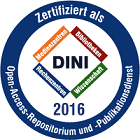Huang, Mengmeng: Effects of Bacillus firmus and Bacterial Secondary Metabolites on the Plant Parasitic Nematode Heterodera schachtii : Impact Assessment and Mechanistic Insights. - Bonn, 2025. - Dissertation, Rheinische Friedrich-Wilhelms-Universität Bonn.
Online-Ausgabe in bonndoc: https://nbn-resolving.org/urn:nbn:de:hbz:5-82498
Online-Ausgabe in bonndoc: https://nbn-resolving.org/urn:nbn:de:hbz:5-82498
@phdthesis{handle:20.500.11811/13050,
urn: https://nbn-resolving.org/urn:nbn:de:hbz:5-82498,
author = {{Mengmeng Huang}},
title = {Effects of Bacillus firmus and Bacterial Secondary Metabolites on the Plant Parasitic Nematode Heterodera schachtii : Impact Assessment and Mechanistic Insights},
school = {Rheinische Friedrich-Wilhelms-Universität Bonn},
year = 2025,
month = may,
note = {Plant-parasitic nematodes cause enormous yield losses and economic damage to a wide range of economically important crops. Although synthetic chemicals can be effective in controlling plant-parasitic nematodes, their use raises significant environmental and health concerns. In this context, bio-based control strategies, particularly those utilizing microbes and microbial compounds, have emerged as promising alternatives.
Our studies aim to explore the efficacy and mechanism of action of Bacillus firmus I-1582 and the bacterial secondary metabolites prodiginines and rhamnolipids as microbial control agents against the beet cyst nematode Heterodera schachtii using a multidisciplinary approach involving microbiology, molecular biology and bioinformatics.
Chapters 2 and 3 present a comprehensive investigation of the potential of B. firmus I-1582 for biological control of H. schachtii. We have shown that B. firmus I-1582 can be attracted to Arabidopsis thaliana root exudates and that its colonization and development at the root of the host is pH-dependent. We also show that living bacterial cells clearly protect A. thaliana from infestation by H. schachtii. In contrast, dead bacterial cells or culture supernatant show no such effect. Interestingly, the living cells of B. firmus I-1582 also inhibit the infection, development and reproduction of the next generation juveniles. Since bacterial colonization of the host roots is not pronounced, no bacterial biofilm is present to prevent invasion of the invading J2 infective juveniles. We hypothesize that the 2nd generation J2 are less fit and that active molecules secreted by B. firmus I-1582 may have an inhibitory effect on the nematodes. In another experiment, direct contact of the cell-free supernatant with H. schachtii juveniles was shown to have a significant nematicidal effect when formed at higher temperatures. This lethal effect can be attributed to small molecules produced by B. firmus I-1582 under these conditions. Their molecular weight is below ~3 kDa and they are both protease-sensitive and protease-resistant. Using genome mining tools, a biosynthetic gene cluster was identified in the genome of B. firmus I-1582 encoding three putative lanthipeptides that are potential compounds active against nematodes. Gene expression analysis confirms the upregulation of all three putative lanthipeptide genes in B. firmus I-1582 and thus their presence in the culture supernatant.
In Chapter 4, the use of prodiginines alone and together with rhamnolipids as active substances against nematodes is investigated. We observed that prodiginines remarkably inhibited parasitism of H. schachtii on its host plant by reducing the motility of J2 and the activity of the mouth stylet as an indicator of J2 infection activity. In addition, we investigated the synergistic effect of prodiginines and rhamnolipids for the first time and found that the application of both substances is more effective against the nematodes than the application of either substance alone.
We are convinced that this research can improve the fundamental understanding and practical implementation of microbial-based control strategies and drive the development of innovative and sustainable solutions for integrated nematode management.},
url = {https://hdl.handle.net/20.500.11811/13050}
}
urn: https://nbn-resolving.org/urn:nbn:de:hbz:5-82498,
author = {{Mengmeng Huang}},
title = {Effects of Bacillus firmus and Bacterial Secondary Metabolites on the Plant Parasitic Nematode Heterodera schachtii : Impact Assessment and Mechanistic Insights},
school = {Rheinische Friedrich-Wilhelms-Universität Bonn},
year = 2025,
month = may,
note = {Plant-parasitic nematodes cause enormous yield losses and economic damage to a wide range of economically important crops. Although synthetic chemicals can be effective in controlling plant-parasitic nematodes, their use raises significant environmental and health concerns. In this context, bio-based control strategies, particularly those utilizing microbes and microbial compounds, have emerged as promising alternatives.
Our studies aim to explore the efficacy and mechanism of action of Bacillus firmus I-1582 and the bacterial secondary metabolites prodiginines and rhamnolipids as microbial control agents against the beet cyst nematode Heterodera schachtii using a multidisciplinary approach involving microbiology, molecular biology and bioinformatics.
Chapters 2 and 3 present a comprehensive investigation of the potential of B. firmus I-1582 for biological control of H. schachtii. We have shown that B. firmus I-1582 can be attracted to Arabidopsis thaliana root exudates and that its colonization and development at the root of the host is pH-dependent. We also show that living bacterial cells clearly protect A. thaliana from infestation by H. schachtii. In contrast, dead bacterial cells or culture supernatant show no such effect. Interestingly, the living cells of B. firmus I-1582 also inhibit the infection, development and reproduction of the next generation juveniles. Since bacterial colonization of the host roots is not pronounced, no bacterial biofilm is present to prevent invasion of the invading J2 infective juveniles. We hypothesize that the 2nd generation J2 are less fit and that active molecules secreted by B. firmus I-1582 may have an inhibitory effect on the nematodes. In another experiment, direct contact of the cell-free supernatant with H. schachtii juveniles was shown to have a significant nematicidal effect when formed at higher temperatures. This lethal effect can be attributed to small molecules produced by B. firmus I-1582 under these conditions. Their molecular weight is below ~3 kDa and they are both protease-sensitive and protease-resistant. Using genome mining tools, a biosynthetic gene cluster was identified in the genome of B. firmus I-1582 encoding three putative lanthipeptides that are potential compounds active against nematodes. Gene expression analysis confirms the upregulation of all three putative lanthipeptide genes in B. firmus I-1582 and thus their presence in the culture supernatant.
In Chapter 4, the use of prodiginines alone and together with rhamnolipids as active substances against nematodes is investigated. We observed that prodiginines remarkably inhibited parasitism of H. schachtii on its host plant by reducing the motility of J2 and the activity of the mouth stylet as an indicator of J2 infection activity. In addition, we investigated the synergistic effect of prodiginines and rhamnolipids for the first time and found that the application of both substances is more effective against the nematodes than the application of either substance alone.
We are convinced that this research can improve the fundamental understanding and practical implementation of microbial-based control strategies and drive the development of innovative and sustainable solutions for integrated nematode management.},
url = {https://hdl.handle.net/20.500.11811/13050}
}





